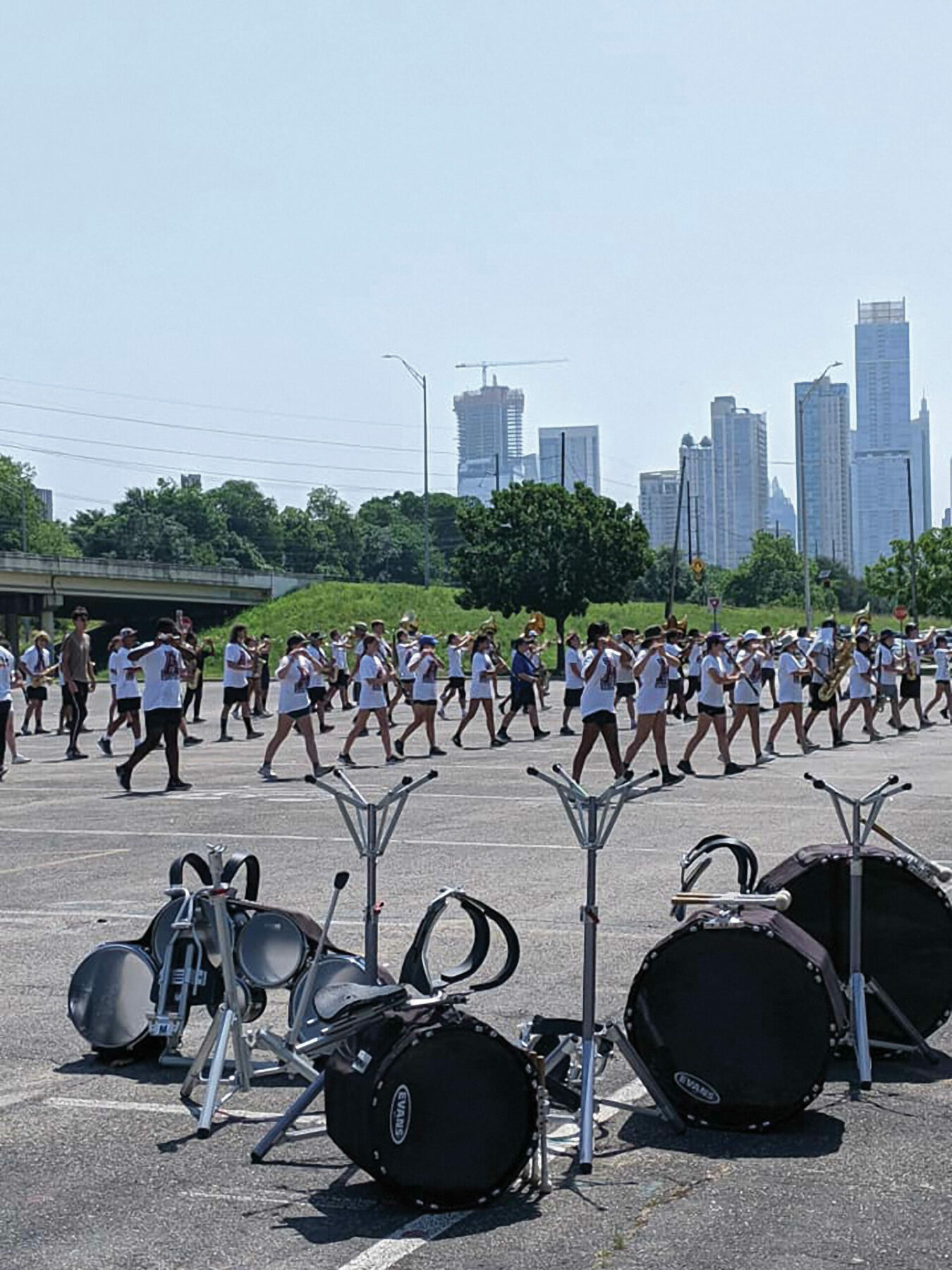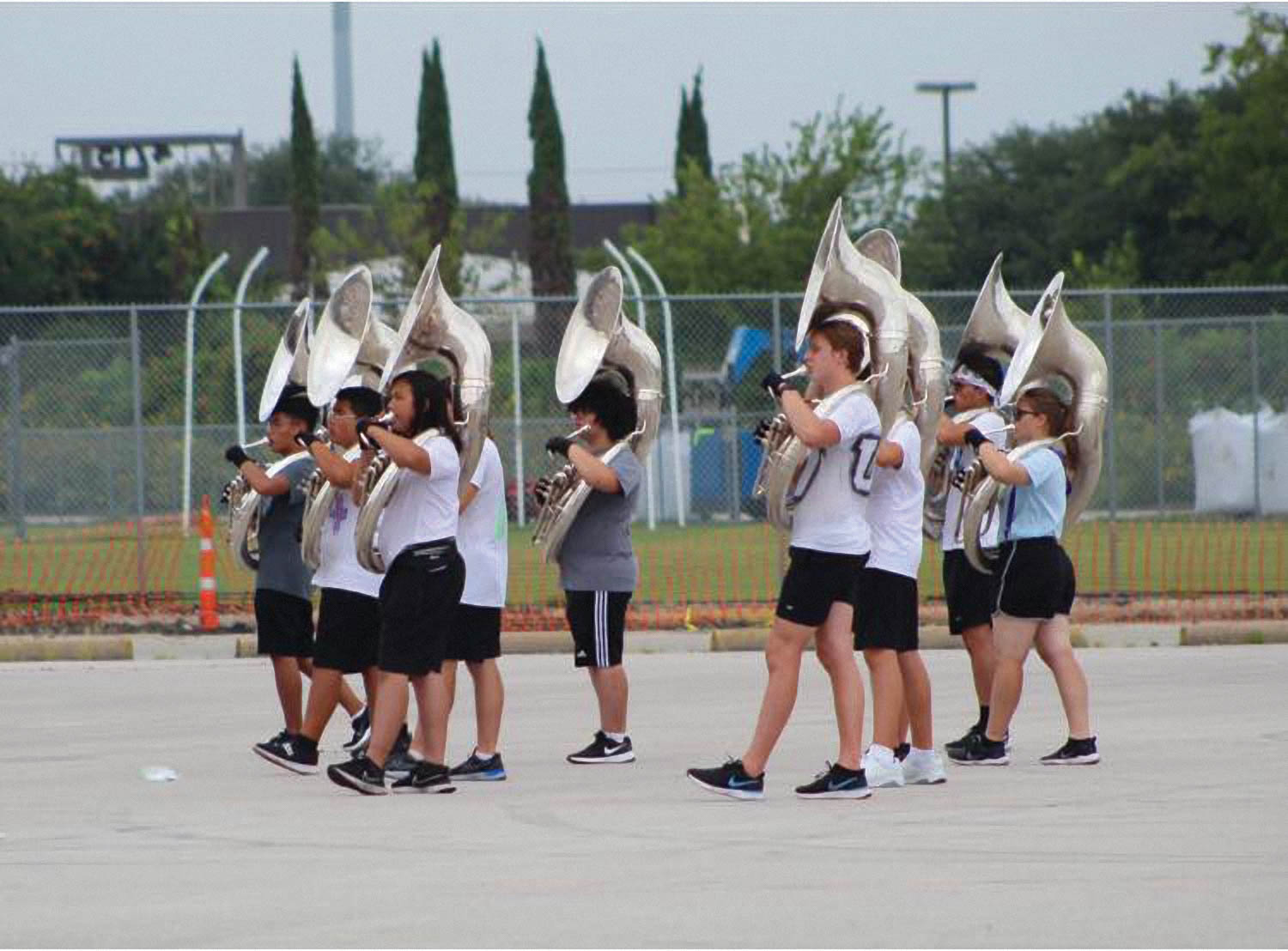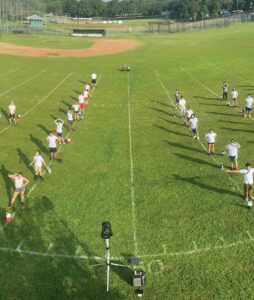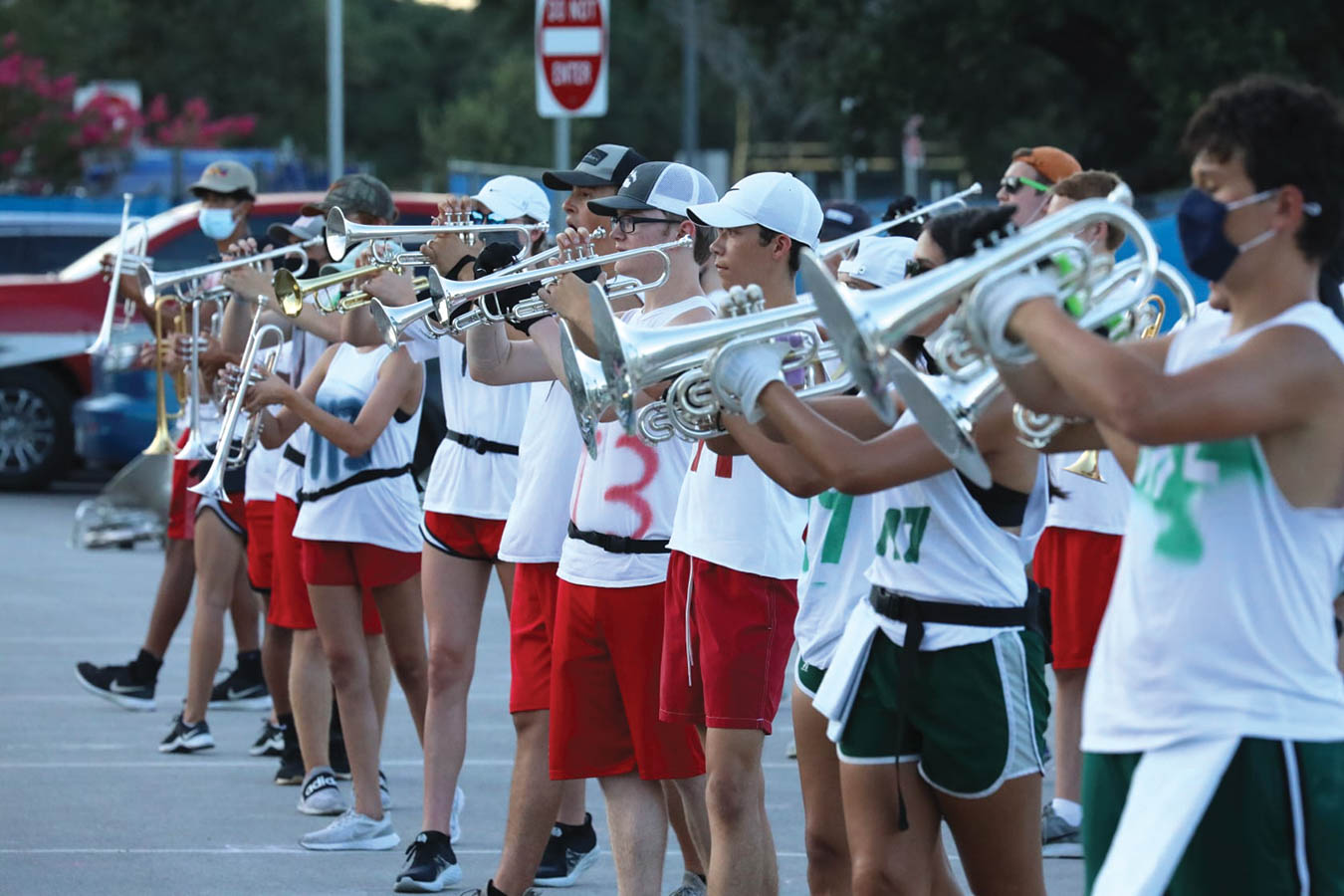Behind the Marching Bands of Austin ISD

Marching bands make football games sound like football games. They create the pre-game pageantry and hype, and they power their school’s players, fans, cheerleaders and drill teams with pop songs, fight songs and “let’s go crazy” drumline cadences like “Wipe Out.”
But marching bands’ halftime shows are the reason for their boot camp-style summer band camps, where students practice up to 40 hours a week the month before school starts. Eight minutes of halftime entertainment is five months in the making, representing over 150 hours of practice. The “summer band camp” tradition is known to generations of high school students. To perform in the Texas heat, directors and students know that getting in shape begins months in advance.

Jennifer Hanford, the Bowie High School band director, says their training start in May. This can include walking, running/jogging, and doing core and upper-body exercises. At camp, the student fitness leadership team leads a morning workout with running games like relays and bodyweight exercises on yoga mats, then a cool down.
“They typically lead some sort of meditation to help calm their bodies and get them focused on the rest of the rehearsal day,” Hanford says.
Bass drum player Ellie Gonzalez, who is preparing for her first marching season with Akins Eagle Band, started core and upper-body workouts in June.
“(We do) pushups, situps, crunches — anything that can help with your core,” Gonzalez says. “We need our upper body to hold the drum upright, so we don’t fall or have back pain.”
While many Austin-area high school bands use straight-legged, corps-style marching techniques, Northeast Early College High School’s Soul Raider Band is known for their “show-style” performances with high, 90-degree steps and on-field dancing.
“We’re the only show band in Austin,” says Rory Guice, Soul Raider Band director. “We do a lot of running, crunches, jumping jacks and other common workouts along with breathing exercises, drill and music rehearsal.”

Practicing morning and night, Austin High’s Maroon Band features junior Anna Lilie, the only twirler in Austin ISD. She jogs in the summer to prepare for camp as she and the color guard are always moving around the field. She says her approach to performing with the marching band is different from solo-competing with Twirl ATX.
“You have to be entertaining and present yourself to a whole stadium,” Lilie says. “I lift my whole body up; I almost do a backbend so I feel and look more projected to the crowd.”
Core strength, stamina, balance, marching technique and muscle memory are the physical foundations for marching, says Ryan Pride, assistant band director at McCallum High School and Director of Percussion for MAC Band. He focuses on helping young musicians develop the muscle to control their body weight. Preparation for marching season starts with playing in the spring and begins movement in May. Spring band camp teaches students the “roll step” technique to march forward and sideways and the elevated relevé for moving backward.
Pride says today’s expectations are different because students march and play while also adding dance, lunges and even gymnastics. Faster music tempos mean players’ technique becomes more important to maintain balance while playing instruments. If The Go-Go’s “We Got the Beat” sets a pace for a moderate jog at 150 beats per minute — about a 10-minute mile — then compare that to a song like “Footloose” at 170 beats per minute. Pride says marching band show tempos may go up to 200 beats per minute in some parts, and players are sprinting — a unique challenge for the horn line and woodwinds.
“The faster the tempo, the more air they need,” Pride explains. “We have staggered breathing methods, but they usually have to take in all the air they need to move and for their body to make sound in a second. When it’s done well, you appreciate the physical and aerobic challenge of taking all that air in and using it for the next 15 seconds.”

Anna Cecil plays mellophone in the Liberal Arts and Science Academy Raptor Band, and she prepares for camp with two-mile walks in June and July. One of the “unbearable rules” of camp is no sitting down during breaks, she says, and another is jogging on and off the field for water breaks. However, she enjoys the excitement before a show.
“There’s a cheesy movie moment of quiet before we begin,” Cecil says. “A lot of us enjoy getting the experience of performing on a field, especially at night with the lights. It’s surreal.”
With the Texas heat, it’s important to stay healthy. Crockett Cougar Band Director Brianna Moehnke says parents help make sure kids stay hydrated and fed all season long. They also drive equipment trucks, help load or unload equipment, and build props for shows.
Not only do parents help but part-time band techs help support these students, says Charles Mead, an alumnus of The University of Texas at Austin Longhorn Band and a former president of Bowie Band Booster Club. He says maintaining students’ health and safety in the heat is a challenge that AISD marching bands face.
Ultimately, Mead highlights the unique opportunity marching band offers for students to learn a variety of skills and techniques.
“There are few opportunities to combine teamwork, physical activity and artistic expression than a marching band program offers,” Mead says. “These programs have evolved to levels where there’s opportunities to learn in ways they won’t experience anywhere else.”
About the Author

Laura Bond Williams is an Austin-based writer, life coach and Pilates instructor and former marching band/colorguard parent who loves supporting kids and families enjoy movement for a lifetime. Learn how she helps kids and adults keep moving at laurabw.com and on Instagram @laura_b_williams.






